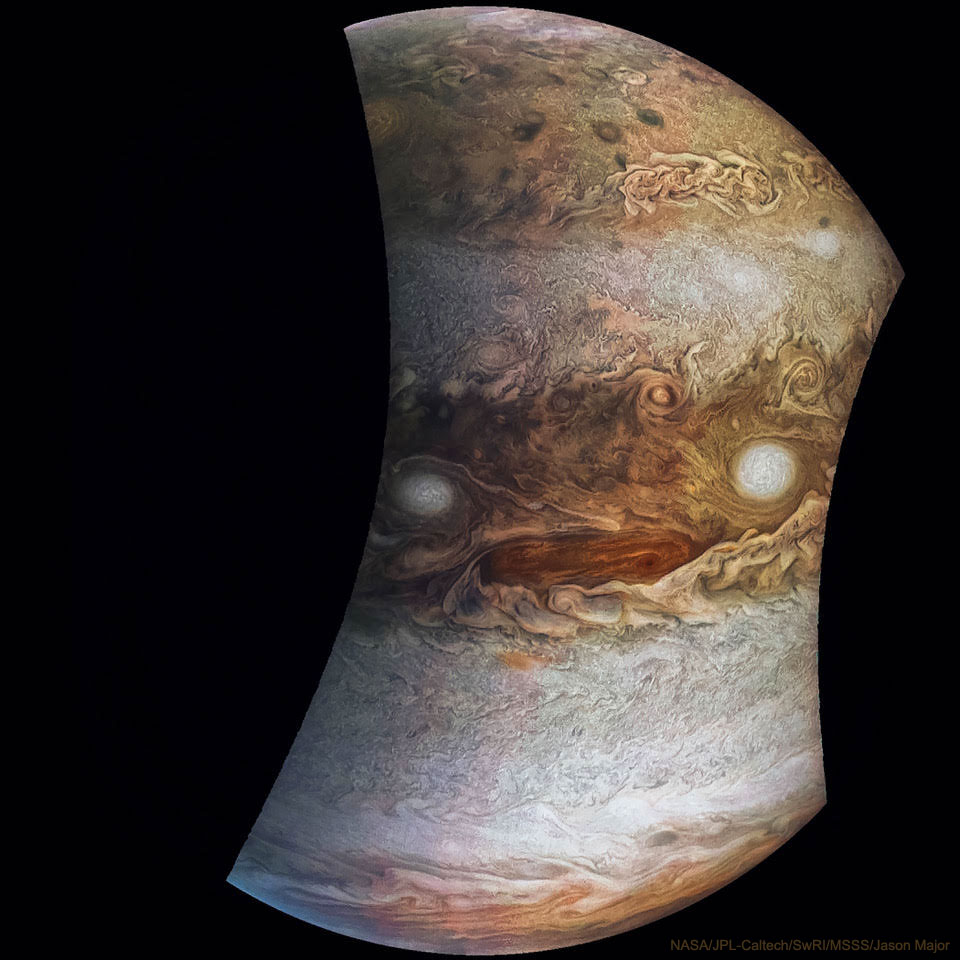2021年06月08日
A Face in the Clouds of Jupiter from Juno
Image Credit: NASA/JPL-Caltech/SwRI/MSSS/Jason Major
Explanation: What do you see in the clouds of Jupiter? On the largest scale, circling the planet, Jupiter has alternating light zones and reddish-brown belts. Rising zone gas, mostly hydrogen and helium, usually swirls around regions of high pressure. Conversely, falling belt gas usually whirls around regions of low pressure, like cyclones and hurricanes on Earth. Belt storms can form into large and long-lasting white ovals and elongated red spots. NASA’s robotic Juno spacecraft captured most of these cloud features in 2017 during perijove 6, its sixth pass over the giant planet in its looping 2-month orbit. But it is surely not these clouds themselves that draws your attention to the displayed image, but rather their arrangement. The face that stands out, nicknamed Jovey McJupiterFace, lasted perhaps a few weeks before the neighboring storm clouds rotated away. Juno has now completed 33 orbits around Jupiter and just yesterday made a close pass near Ganymede, our Solar System’s largest moon.
Tomorrow’s picture: this strange moon
朱诺号影像:木星云层上的脸谱
影像提供: NASA/JPL-Caltech/SwRI/MSSS/Jason Major
说明: 在木星的云层上能见到什么?其中最大尺度的是环绕整个木星,交替排列的淡色云区和红棕色的云带。主成分为氢和氦的涌升云区气体,通常旋绕高压区。相反的,沉降的云带气体,通常旋绕类似地球气回和飓风的低压区。而云带的风暴系统,则会形成存在很久的大形白椭圆与颀长的红斑。美国航太总署的朱诺号太空船,于2017年为期2个月的环形旅程的近木轨道6之时,就记录上述的大部分结构。不过,在上面这幅主题影像里,最吸睛的并不是这些云层结构,而是它们的排列。这个称为木星脸的组合,存在了数周直到另一个风暴系统远去。朱诺号已绕行木星33圈,并且刚在昨天近距离掠过木卫三,这颗太阳系最大的卫星。 (Jovey McJupiterFace 木星脸)
明日的图片: this strange moon







